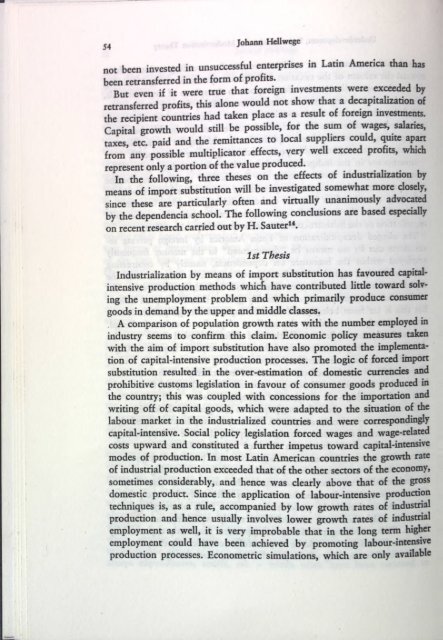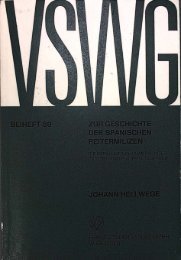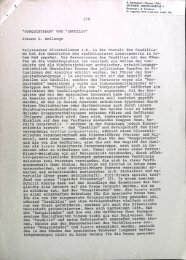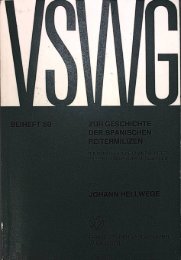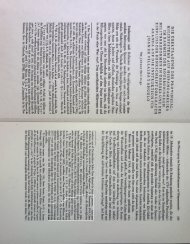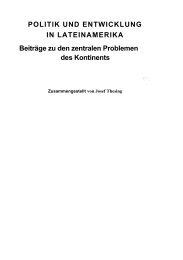9_Law and State_Volume 17
Create successful ePaper yourself
Turn your PDF publications into a flip-book with our unique Google optimized e-Paper software.
54<br />
Johann Hellwege<br />
not been invested in unsuccessful enterprises in Latin America than has<br />
been retransferred in the form of profits.<br />
But even if it were true that foreign investments were exceeded by<br />
retransferred profits, this alone would not show that a decapitalization of<br />
the recipient countries had taken place as a result of foreign investments.<br />
Capital growth would still be possible, for the sum of wages, salaries,<br />
taxes, etc. paid <strong>and</strong> the remittances to local suppliers could, quite apart<br />
from’ any possible multiplicator effects, very well exceed profits, which<br />
represent only a portion of the value produced.<br />
In the following, three theses on the effects of industrialization by<br />
means of import substitution will be investigated somewhat more closely,<br />
since these are particularly often <strong>and</strong> virtually unanimously advocated<br />
by the dependencia school. The following conclusions are based especially<br />
on recent research carried out by H. Sauter14.<br />
1st Thesis<br />
Industrialization by means of import substitution has favoured capitalintensive<br />
production methods which have contributed litde toward solving<br />
the unemployment problem <strong>and</strong> which primarily produce consumer<br />
goods in dem<strong>and</strong> by the upper <strong>and</strong> middle classes.<br />
A comparison of population growth rates with the number employed in<br />
industry seems to confirm this claim. Economic policy measures taken<br />
with the aim of import substitution have also promoted the implementation<br />
of capital-intensive production processes. The logic of forced import<br />
substitution resulted in the over-estimation of domestic currencies <strong>and</strong><br />
prohibitive customs legislation in favour of consumer goods produced in<br />
the country; this was coupled with concessions for the importation <strong>and</strong><br />
writing off of capital goods, which were adapted to the situation of the<br />
labour market in the industrialized countries <strong>and</strong> were correspondingly<br />
capital-intensive. Social policy legislation forced wages <strong>and</strong> wage-related<br />
costs upward <strong>and</strong> constituted a further impetus toward capital-intensive<br />
modes of production. In most Latin American countries the growth rate<br />
of industrial production exceeded that of the other sectors of the economy,<br />
sometimes considerably, <strong>and</strong> hence was clearly above that of the gross<br />
domestic product. Since the application of labour-intensive production<br />
techniques is, as a rule, accompanied by low growth rates of industrial<br />
production <strong>and</strong> hence usually involves lower growth rates of industrial<br />
employment as well, it is very improbable that in the long term higher<br />
employment could have been achieved by promoting labour-intensive<br />
production processes. Econometric simulations, which are only available


